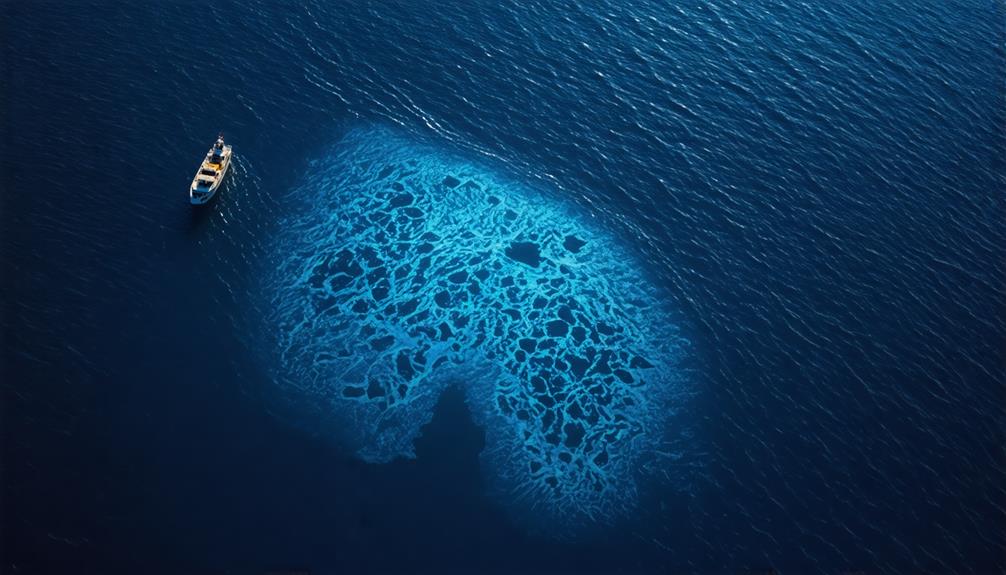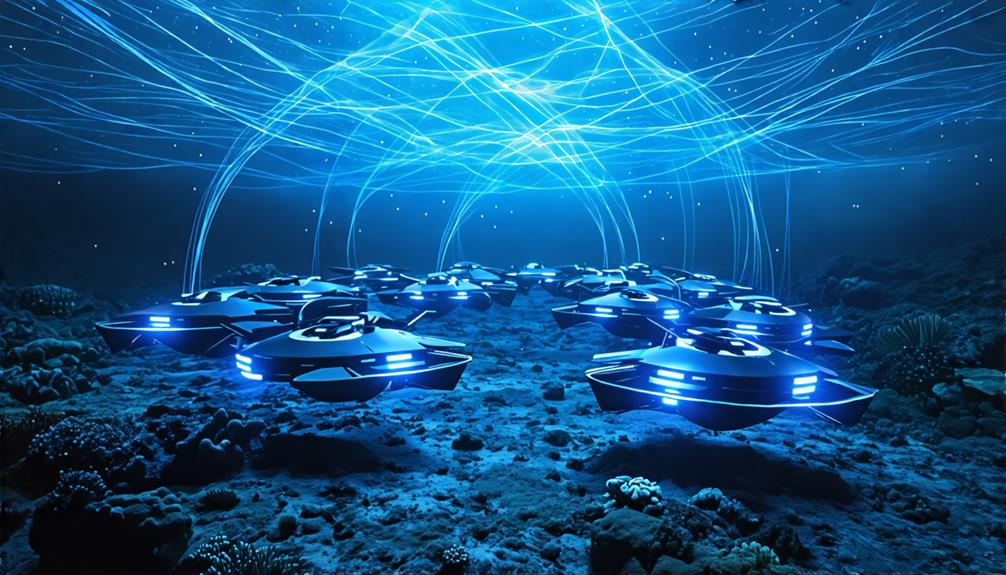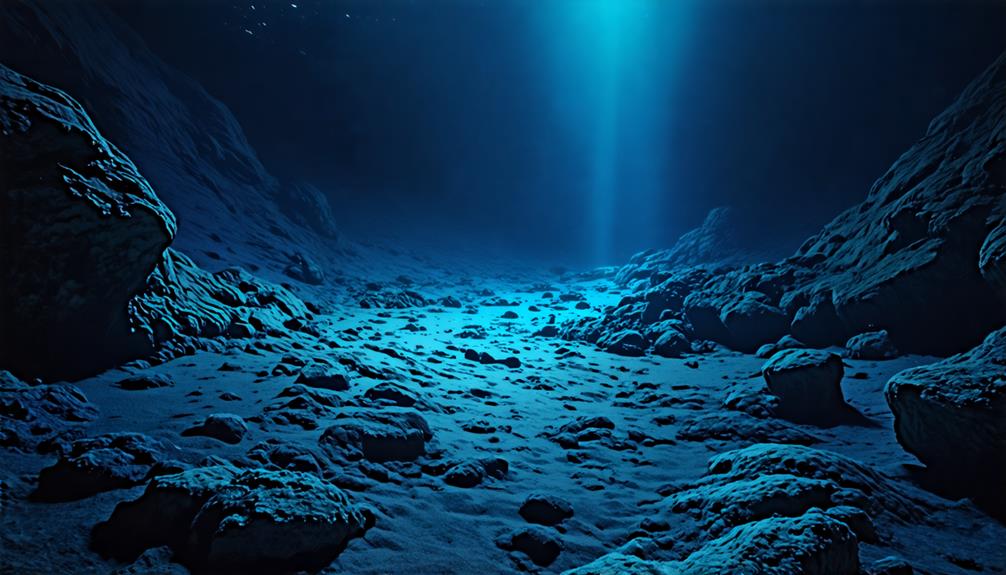You might be surprised to learn that despite centuries of maritime exploration, we've only mapped 1% of the ocean floor in detail. This vast unknown beneath the waves holds countless mysteries, from undiscovered species to potential resources and geological wonders. The challenges of extreme pressure, darkness, and technological limitations have kept much of the seafloor hidden from our view. But as new initiatives and technologies emerge, we're on the brink of uncovering secrets that could revolutionize our understanding of the planet. What lies waiting in the unexplored 99%, and how might these discoveries impact our future?
Key Takeaways
- Only 1% of the ocean floor has been mapped in high resolution, despite recent advancements in seafloor mapping.
- Extreme pressure, darkness, and technological limitations pose significant challenges to detailed ocean floor mapping.
- The Seabed 2030 initiative aims to completely map the seafloor by 2030, addressing the current lack of detailed data.
- Advanced techniques like multibeam sonar and satellite altimetry are being used to improve ocean floor mapping accuracy.
Current Ocean Mapping Progress

Today's ocean floor mapping efforts have made remarkable strides, with approximately 25% of the seafloor now charted in unprecedented detail.
You'll be amazed to learn that just a few years ago, only 6% of the ocean floor had been mapped.
The Seabed 2030 initiative aims to complete mapping the entire seafloor by 2030, using high-resolution data from multibeam sonar systems.
Recent advancements have added 5.4 million square kilometers of new mapping data, equivalent to twice Argentina's size.
Global partnerships have been essential in acquiring 90 million square kilometers of bathymetric data.
However, only about 1% of the ocean floor has been mapped in high resolution, capable of detecting features several meters in size.
These efforts align with the UN's Decade of Ocean Science for Sustainable Development, pushing us closer to understanding our planet's deepest points.
Challenges in Seafloor Exploration
While recent progress in ocean floor mapping is impressive, significant challenges remain in exploring the vast underwater territory that covers most of our planet's surface. You'll find that the ocean's immense scale and extreme conditions pose major obstacles to seafloor exploration. Here's a breakdown of key challenges:
| Challenge | Impact |
|---|---|
| Extreme pressure | Limits equipment functionality |
| Darkness | Hinders visual exploration |
| Advanced technology | High costs and complexity |
| Vast scale | Slow mapping progress |
To map the seafloor, you'll need specialized submersibles and sonar technology. However, these tools are expensive and logistically complex. Funding constraints further complicate research efforts, making thorough mapping a intimidating task. Despite covering 70% of Earth's surface, only 1% of the ocean floor has been mapped in detail. Overcoming these challenges is essential for advancing our understanding of this largely unexplored domain.
Future of Ocean Cartography

Ocean cartography's future promises groundbreaking advancements in our understanding of Earth's underwater landscapes. With initiatives like Seabed 2030 aiming for complete ocean mapping by 2030, you'll soon see a dramatic increase in our knowledge of the seafloor. Collaborative efforts among researchers and organizations are driving this progress, utilizing cutting-edge technologies to explore uncharted territories.
Here's what you can expect in the future of ocean cartography:
- High-resolution data covering more of the ocean floor
- Advanced multibeam sonar and satellite altimetry techniques
- Improved identification of small geological features
As technological advancements continue, you'll witness a revolution in ocean mapping. These innovations won't only enhance our understanding of marine ecosystems but also support critical applications in climate science, resource management, and navigation.
The future of ocean cartography is set to reveal the secrets of our planet's last great frontier.
Conclusion
You're standing at the edge of a vast, unexplored frontier. The ocean's depths hold secrets you've yet to discover, with 99% still shrouded in mystery.
It's an intimidating task, but you've got the tools and determination to make a difference. As you push forward with new technologies and initiatives like Seabed 2030, you're not just mapping the ocean floor;
you're revealing a world of knowledge that'll shape our understanding of Earth for generations to come.

Leave a Reply